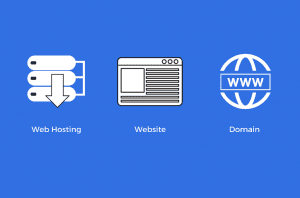Mobile website experience has mattered since the time people started using mobiles more than computers. The importance of a good mobile experience has been rising and continues to do so. Statistics showed that the traffic coming from mobile devices increased from 31.16% in 2015 to 54.4% in quarter 4 of 2021. So it’s no surprise that we are mostly connected through our mobile devices.
Google first declared that mobile website experiences impact the search results in their mobile-friendly update in April 2015. Following that, there came several updates. The recent update in March 2021 noted that desktop-only sites would be dropped from Google’s index. And that’s how the world shifted to “Mobile-first” from “Mobile-friendly”!
What does an excellent mobile experience mean?
- Your website needs to be mobile-friendly, meaning a user can navigate through the whole site without the need to zoom in or constantly scroll sideways. It should be truly optimized for mobile devices.
- Your web pages need to load faster. Or else the website will hold no chance. The user will just move on to the following search result.
- The site should be easy-to-use. The recent fuss about a good user experience is real! Your audience will not spend time on your site if it’s not a whole experience package deal.
The experience is no longer just for competition, but it is also essential for your site’s ranking and performance in search engines.
The Elements of a Mobile-friendly Website
Good Content
When mobile sites started gaining popularity, many businesses began providing lesser content than the desktop version to keep them simple. But, it needs to be the same as per the mobile-first indexing rules. Most of the indexing comes from the mobile site, so the primary content and the headings should be equivalent on both versions. Treat your mobile site as the preliminary version to avoid seeing a decline in the overall site performance and rankings.
Mobile-first Design
A mobile-friendly site will function the same on mobile devices as it works on a desktop, but that’s designed with keeping the mobile user in mind. Responsive sites meet all the standards for mobile sites set by Google and use a layout that appeals to different mobile screen sizes. For example, elements like flash plug-ins and pop-ups are hard to reach on a mobile device and can ruin the user experience for your target audience. The site should have a thumbs-friendly layout wherein users can easily navigate. The CTAs and navigation menus should be easier to use. The visual elements, payment integrations, and features like live chat should be considered.
Core Web Vitals
A recent Google Page Experience Update came in May 2021 and combined user experience metrics with new metrics known as “Core Web Vitals”. These, combined with other metrics, contribute to rankings. For example, these metrics determine your site’s time to achieve factors like visual stability, loading, and interactivity. The measures that help identify are Largest Contentful Paint (LCP), First Input Delay (FID), and Cumulative Layout Shift (CLS).
Undoubtedly, mobile-friendly websites will drive more conversions for your business. If you’re looking for help, consider an expert brand like SPARK Services. We have significant experience in building mobile-friendly sites optimized for users and search engines. So why lag behind the competition? Contact us today!




